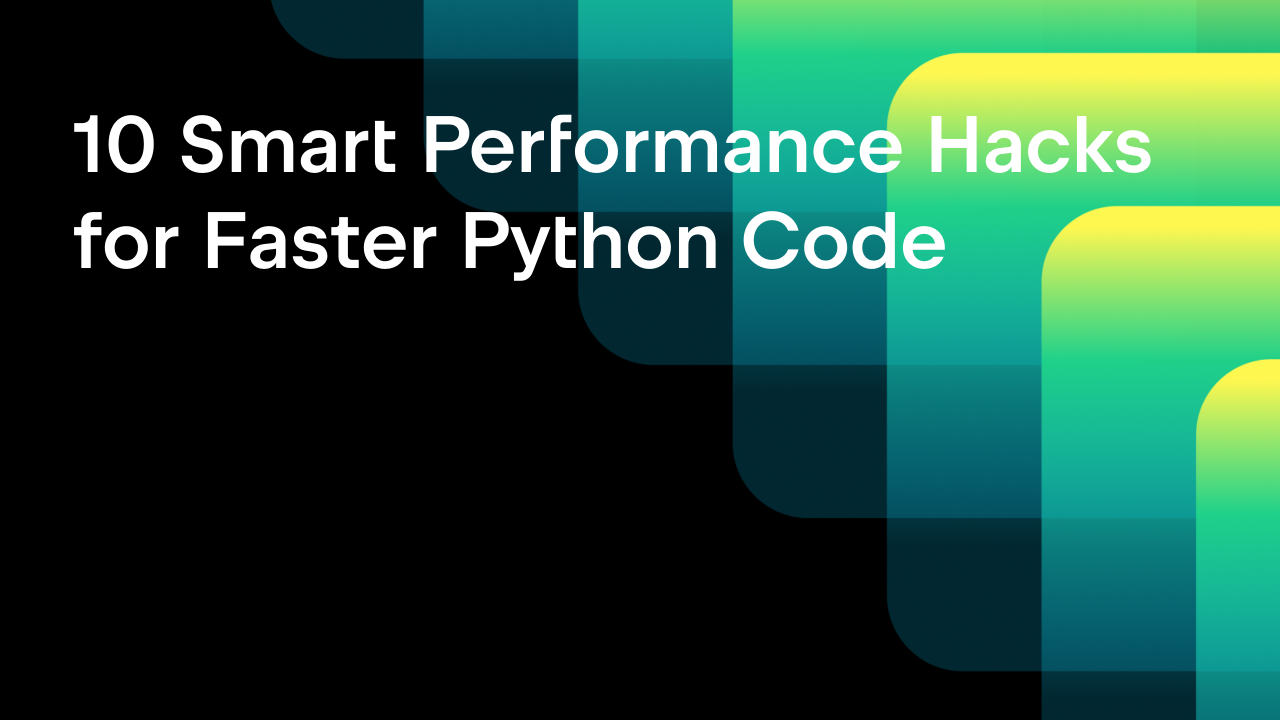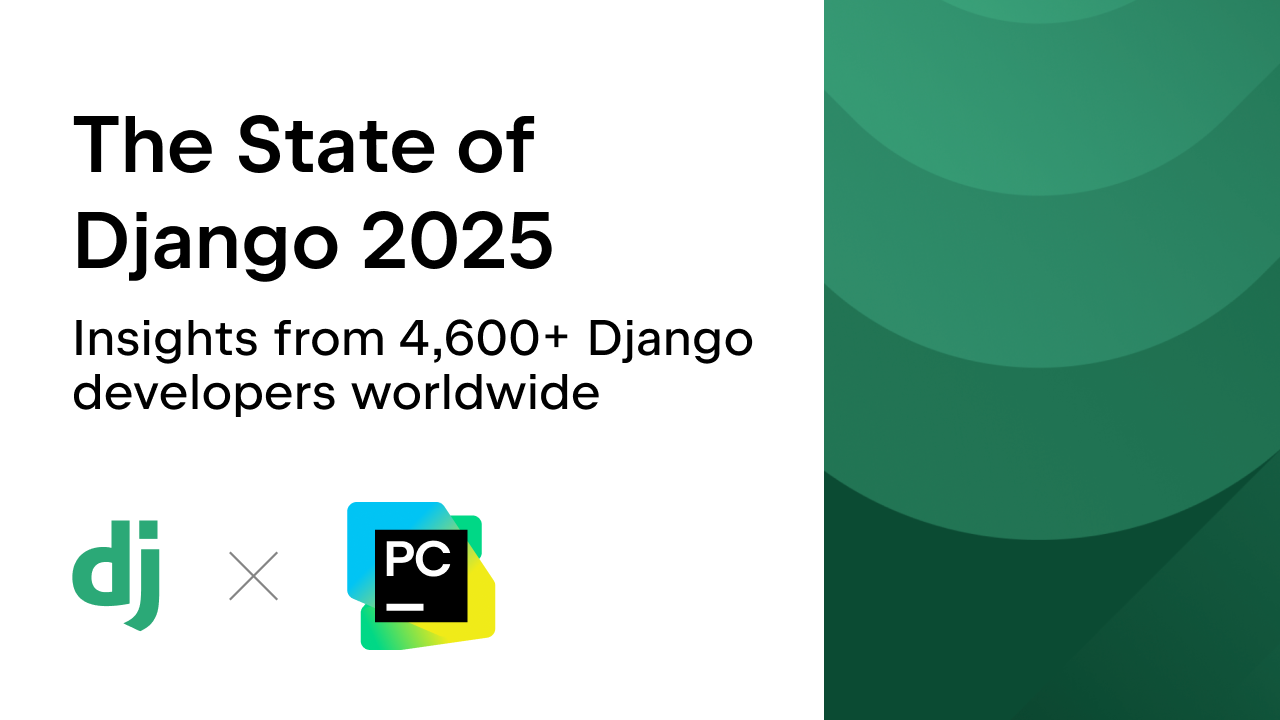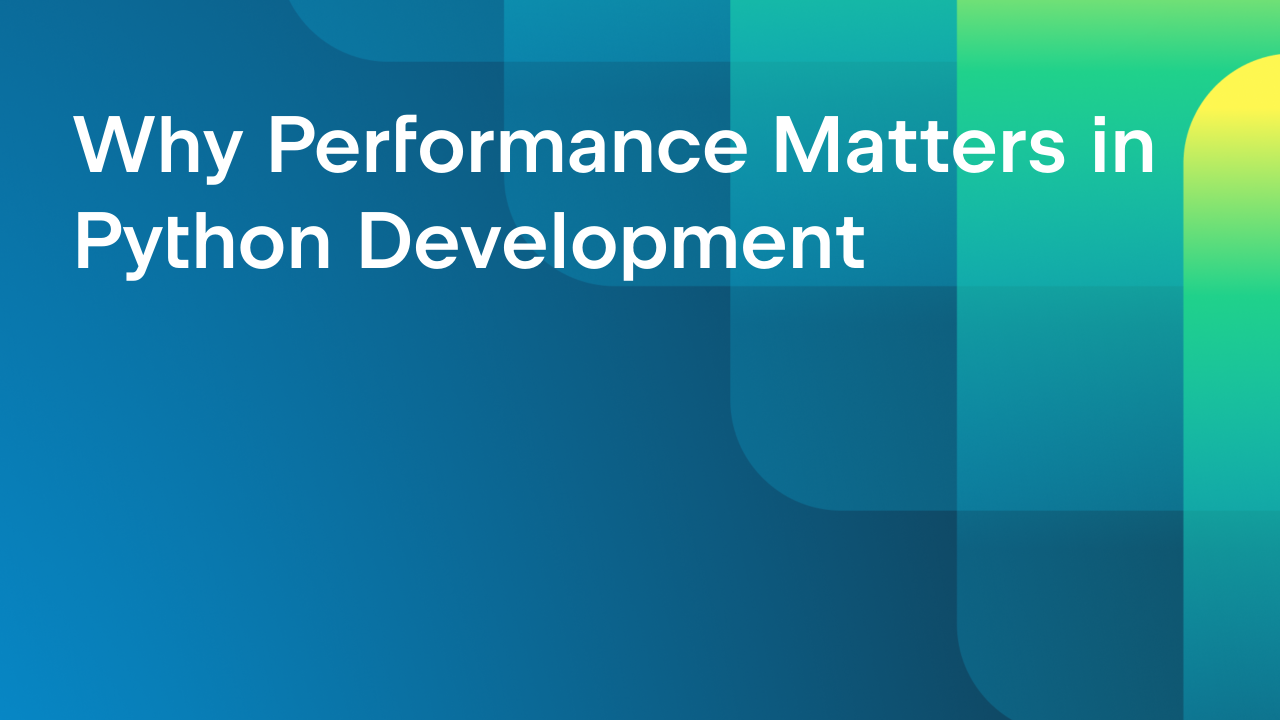The Most Popular Python Frameworks and Libraries in 2025
Whether you’re building APIs, dashboards, or machine learning pipelines, choosing the right framework can make or break your project.
Every year, we survey thousands of Python developers to help you understand how the ecosystem is evolving, from tooling and languages to frameworks and libraries. Our insights from the State of Python 2025 offer a snapshot of what frameworks developers are using in 2025.
In this article, we’ll look at the most popular Python frameworks and libraries. While some long-standing favorites like Django and Flask remain strong, newer contenders like FastAPI are rapidly gaining ground in areas like AI, ML, and data science.
1. FastAPI
2024 usage: 38% (+9% from 2023)
Top of the table is FastAPI, a modern, high-performance web framework for building APIs with Python 3.8+. It was designed to combine Python’s type hinting, asynchronous programming, and OpenAPI standards into a single, developer-friendly package.
Built on top of Starlette (for the web layer) and Pydantic (for data validation), FastAPI offers automatic request validation, serialization, and interactive documentation, all with minimal boilerplate.
FastAPI is ideal for teams prioritizing speed, simplicity, and standards. It’s especially popular among both web developers and data scientists.
FastAPI advantages
- Great for AI/ML: FastAPI is widely used to deploy machine learning models in production. It integrates well with libraries like TensorFlow, PyTorch, and Hugging Face, and supports async model inference pipelines for maximum throughput.
- Asynchronous by default: Built on ASGI, FastAPI supports native async/await, making it ideal for real-time apps, streaming endpoints, and low-latency ML services.
- Type-safe and modern: FastAPI uses Python’s type hints to auto-validate requests and generate clean, editor-friendly code, reducing runtime errors and boosting team productivity.
- Auto-generated docs: FastAPI creates interactive documentation via Swagger UI and ReDoc, making it easy for teams to explore and test endpoints without writing any extra docs.
- Strong community momentum: Though it’s relatively young, FastAPI has built a large and active community and has a growing ecosystem of extensions, tutorials, and integrations.
FastAPI disadvantages
- Steeper learning curve for asynchronous work: async/await unlocks performance, but debugging, testing, and concurrency management can challenge developers new to asynchronous programming.
- Batteries not included: FastAPI lacks built-in tools for authentication, admin, and database management. You’ll need to choose and integrate these manually.
- Smaller ecosystem: FastAPI’s growing plugin landscape still trails Django’s, with fewer ready-made tools for tasks like CMS integration or role-based access control.
2. Django
2024 usage: 35% (+2% from 2023)
Django once again ranks among the most popular Python frameworks for developers.
Originally built for rapid development with built-in security and structure, Django has since evolved into a full-stack toolkit. It’s trusted for everything from content-heavy websites to data science dashboards and ML-powered services.
It follows the model-template-view (MTV) pattern and comes with built-in tools for routing, data access, and user management. This allows teams to move from idea to deployment with minimal setup.
Django advantages
- Batteries included: Django has a comprehensive set of built-in tools, including an ORM, a user authenticator, an admin panel, and a templating engine. This makes it ideal for teams that want to move quickly without assembling their own stack.
- Secure by default: It includes built-in protections against CSRF, SQL injection, XSS, and other common vulnerabilities. Django’s security-first approach is one reason it’s trusted by banks, governments, and large enterprises.
- Scalable and production-ready: Django supports horizontal scaling, caching, and asynchronous views. It’s been used to power high-traffic platforms like Instagram, Pinterest, and Disqus.
- Excellent documentation: Django’s official docs are widely praised for their clarity and completeness, making it accessible to developers at all levels.
- Mature ecosystem: Thousands of third-party packages are available for everything from CMS platforms and REST APIs to payments and search.
- Long-term support: Backed by the Django Software Foundation, Django receives regular updates, security patches, and LTS releases, making it a safe choice for long-term projects.
Django disadvantages
- Heavyweight for small apps: For simple APIs or microservices, Django’s full-stack approach can feel excessive and slow to configure.
- Tightly coupled components: Swapping out parts of the stack, such as the ORM or templating engine, often requires workarounds or deep customization.
- Steeper learning curve: Django’s conventions and depth can be intimidating for beginners or teams used to more minimal frameworks.
3. Flask
2024 usage: 34% (+1% from 2023)
Flask is one of the most popular Python frameworks for small apps, APIs, and data science dashboards.
It is a lightweight, unopinionated web framework that gives you full control over application architecture. Flask is classified as a “microframework” because it doesn’t enforce any particular project structure or include built-in tools like ORM or form validation.
Instead, it provides a simple core and lets you add only what you need. Flask is built on top of Werkzeug (a WSGI utility library) and Jinja2 (a templating engine). It’s known for its clean syntax, intuitive routing, and flexibility.
It scales well when paired with extensions like SQLAlchemy, Flask-Login, or Flask-RESTful.
Flask advantages
- Lightweight and flexible: Flask doesn’t impose structure or dependencies, making it ideal for microservices, APIs, and teams that want to build a stack from the ground up.
- Popular for data science and ML workflows: Flask is frequently used for experimentation like building dashboards, serving models, or turning notebooks into lightweight web apps.
- Beginner-friendly: With minimal setup and a gentle learning curve, Flask is often recommended as a first web framework for Python developers.
- Extensible: A rich ecosystem of extensions allows you to add features like database integration, form validation, and authentication only when needed.
- Modular architecture: Flask’s design makes it easy to break your app into blueprints or integrate with other services, which is perfect for teams working on distributed systems.
- Readable codebase: Flask’s source code is compact and approachable, making it easier to debug, customize, or fork for internal tooling.
Flask disadvantages
- Bring-your-own everything: Unlike Django, Flask doesn’t include an ORM, admin panel, or user management. You’ll need to choose and integrate these yourself.
- DIY security: Flask provides minimal built-in protections, so you implement CSRF protection, input validation, and other best practices manually.
- Potential to become messy: Without conventions or structure, large Flask apps can become difficult to maintain unless you enforce your own architecture and patterns.
4. Requests
2024 usage: 33% (+3% from 2023)
Requests isn’t a web framework, it’s a Python library for making HTTP requests, but its influence on the Python ecosystem is hard to overstate. It’s one of the most downloaded packages on PyPI and is used in everything from web scraping scripts to production-grade microservices.
Requests is often paired with frameworks like Flask or FastAPI to handle outbound HTTP calls. It abstracts away the complexity of raw sockets and urllib, offering a clean, Pythonic interface for sending and receiving data over the web.
Requests advantages
- Simple and intuitive: Requests makes HTTP feel like a native part of Python. Its syntax is clean and readable – requests.get(url) is all it takes to fetch a resource.
- Mature and stable: With over a decade of development, Requests is battle-tested and widely trusted. It’s used by millions of developers and is a default dependency in many Python projects.
- Great for REST clients: Requests is ideal for consuming APIs, integrating with SaaS platforms, or building internal tools that rely on external data sources.
- Excellent documentation and community: The official docs are clear and concise, and the library is well-supported by tutorials, Stack Overflow answers, and GitHub issues.
- Broad compatibility: Requests works seamlessly across Python versions and platforms, with built-in support for sessions, cookies, headers, and timeouts.
Requests disadvantages
- Not async: Requests is synchronous and blocking by design. For high-concurrency workloads or async-native frameworks, alternatives like HTTPX or AIOHTTP are better.
- No built-in retry logic: While it supports connection pooling and timeouts, retry behavior must be implemented manually or via third-party wrappers like urllib3.
- Limited low-level control: Requests simplifies HTTP calls but abstracts networking details, making advanced tuning (e.g. sockets, DNS, and connection reuse) difficult.
5. Asyncio
2024 usage: 23% (+3% from 2023)
Asyncio is Python’s native library for asynchronous programming. It underpins many modern async frameworks and enables developers to write non-blocking code using coroutines, event loops, and async/await syntax.
While not a web framework itself, Asyncio excels at handling I/O-bound tasks such as network requests and subprocesses. It’s often used behind the scenes, but remains a powerful tool for building custom async workflows or integrating with low-level protocols.
Asyncio advantages
- Native async support: Asyncio is part of the Python standard library and provides first-class support for asynchronous I/O using async/await syntax.
- Foundation for modern frameworks: It powers many of today’s most popular async web frameworks, including FastAPI, Starlette, and AIOHTTP.
- Fine-grained control: Developers can manage event loops, schedule coroutines, and coordinate concurrent tasks with precision, which is ideal for building custom async systems.
- Efficient for I/O-bound workloads: Asyncio excels at handling large volumes of concurrent I/O operations, such as API calls, socket connections, or file reads.
Asyncio disadvantages
- Steep learning curve: Concepts like coroutines, event loops, and task scheduling can be difficult for developers new to asynchronous programming.
- Not a full framework: Asyncio doesn’t provide routing, templating, or request handling. It’s a low-level tool that requires additional libraries for web development.
- Debugging complexity: Async code can be harder to trace and debug, especially when dealing with race conditions or nested coroutines.
6. Django REST Framework
2024 usage: 20% (+2% from 2023)
Django REST Framework (DRF) is the most widely used extension for building APIs on top of Django. It provides a powerful, flexible toolkit for serializing data, managing permissions, and exposing RESTful endpoints – all while staying tightly integrated with Django’s core components.
DRF is especially popular in enterprise and backend-heavy applications where teams are already using Django and want to expose a clean, scalable API without switching stacks. It’s also known for its browsable API interface, which makes testing and debugging endpoints much easier during development.
Django REST Framework advantages
- Deep Django integration: DRF builds directly on Django’s models, views, and authentication system, making it a natural fit for teams already using Django.
- Browsable API interface: One of DRF’s key features is its interactive web-based API explorer, which helps developers and testers inspect endpoints without needing external tools.
- Flexible serialization: DRF’s serializers can handle everything from simple fields to deeply nested relationships, and they support both ORM and non-ORM data sources.
- Robust permissions system: DRF includes built-in support for role-based access control, object-level permissions, and custom authorization logic.
- Extensive documentation: DRF is well-documented and widely taught, with a large community and plenty of tutorials, examples, and third-party packages.
Django REST Framework disadvantages
- Django-dependent with heavier setup: DRF is tightly tied to Django and requires more configuration than lightweight frameworks like FastAPI, especially when customizing behavior.
- Less flexible serialization: DRF’s serializers work well for common cases, but customizing them for complex or non-standard data often demands verbose overrides.
Best of the rest: Frameworks 7–10
While the most popular Python frameworks dominate usage across the ecosystem, several others continue to thrive in more specialized domains. These tools may not rank as high overall, but they play important roles in backend services, data pipelines, and async systems.
| Framework | Overview | Advantages | Disadvantages |
| httpx 2024 usage: 15% (+3% from 2023) | Modern HTTP client for sync and async workflows | Async support, HTTP/2, retries, and type hints | Not a web framework, no routing or server-side features |
| aiohttp 2024 usage: 13% (+1% from 2023) | Async toolkit for HTTP servers and clients | ASGI-ready, native WebSocket handling, and flexible middleware | Lower-level than FastAPI, less structured for large apps. |
| Streamlit 2024 usage: 12% (+4% from 2023) | Dashboard and data app builder for data workflows | Fast UI prototyping, with zero front-end knowledge required | Limited control over layout, less suited for complex UIs. |
| Starlette 2024 usage: 8% (+2% from 2023) | Lightweight ASGI framework used by FastAPI | Exceptional performance, composable design, fine-grained routing | Requires manual integration, fewer built-in conveniences |
Choosing the right framework and tools
Whether you’re building a blazing-fast API with FastAPI, a full-stack CMS with Django, or a lightweight dashboard with Flask, the most popular Python web frameworks offer solutions for every use case and developer style.
Insights from the State of Python 2025 show that while Django and Flask remain strong, FastAPI is leading a new wave of async-native, type-safe development. Meanwhile, tools like Requests, Asyncio, and Django REST Framework continue to shape how Python developers build and scale modern web services.
But frameworks are only part of the equation. The right development environment can make all the difference, from faster debugging to smarter code completion and seamless framework integration.
That’s where PyCharm comes in. Whether you’re working with Django, FastAPI, Flask, or all three, PyCharm offers deep support for Python web development. This includes async debugging, REST client tools, and rich integration with popular libraries and frameworks.
Ready to build something great? Try PyCharm and see how much faster and smoother Python web development can be.
Subscribe to PyCharm Blog updates








